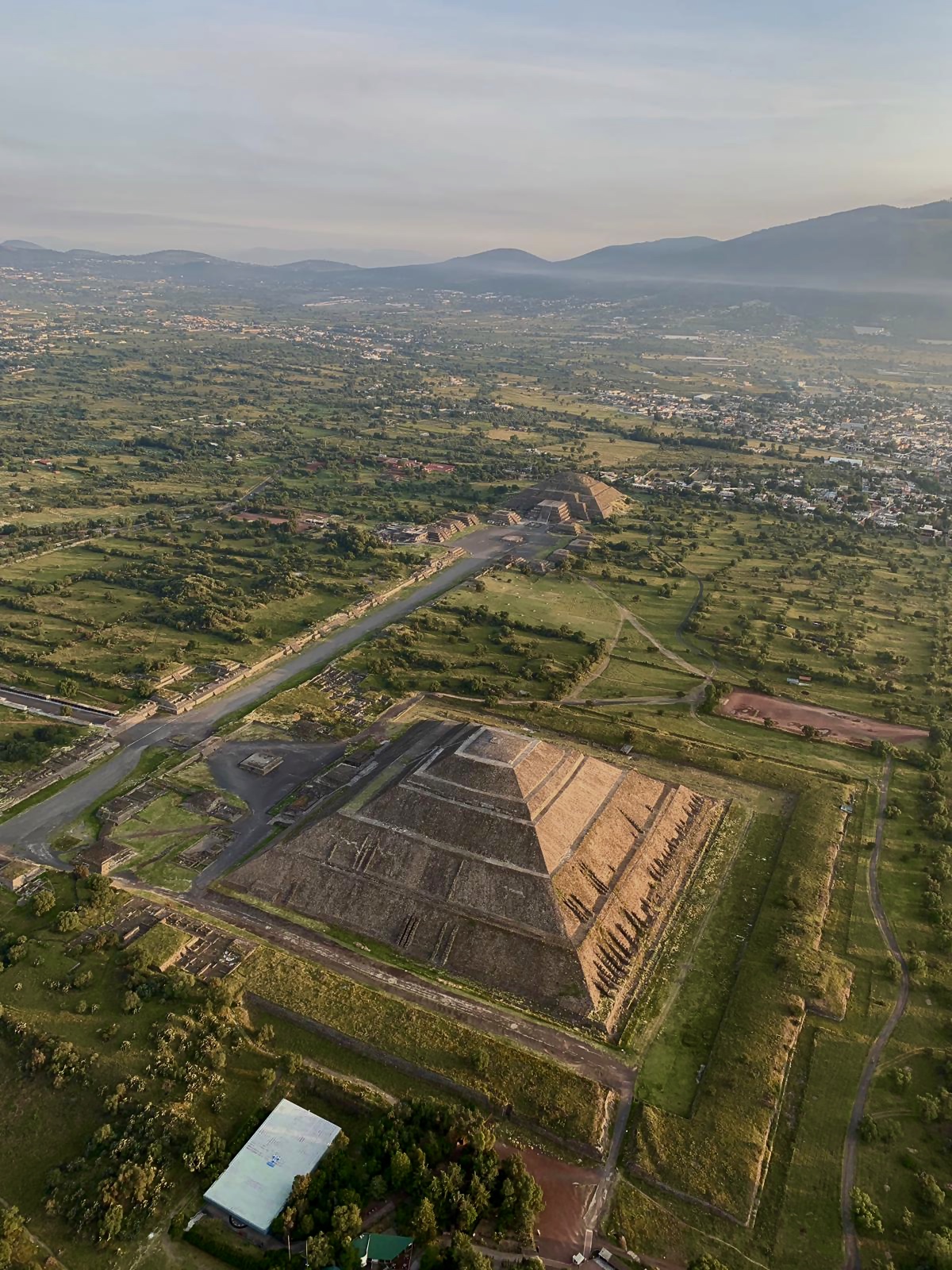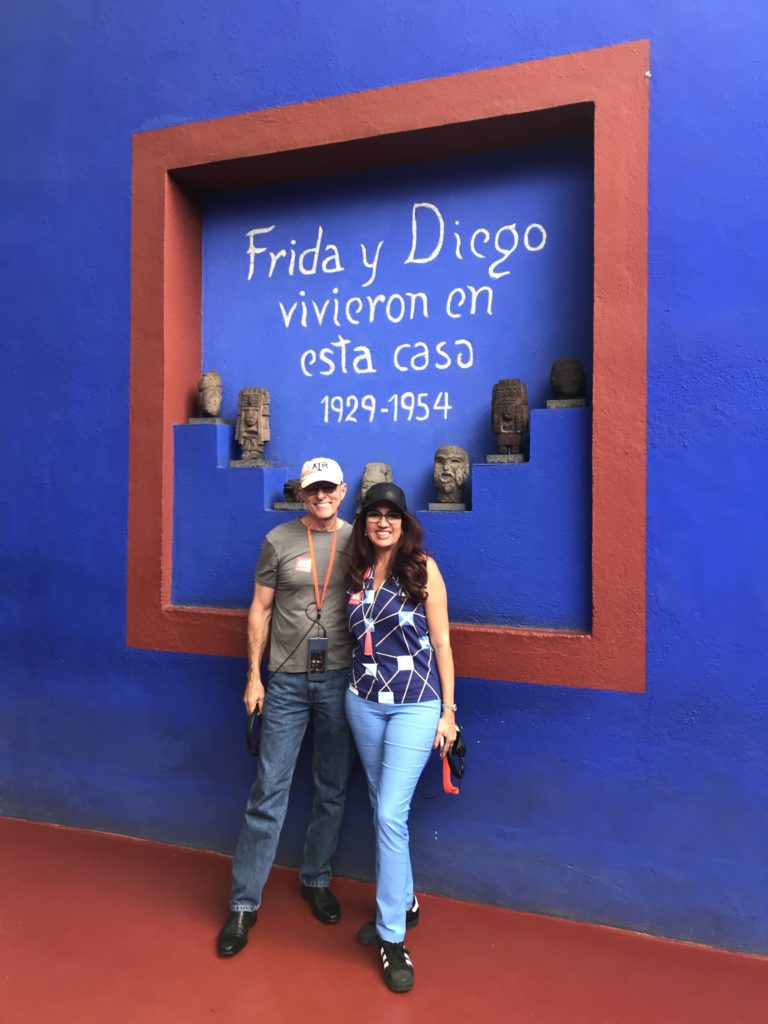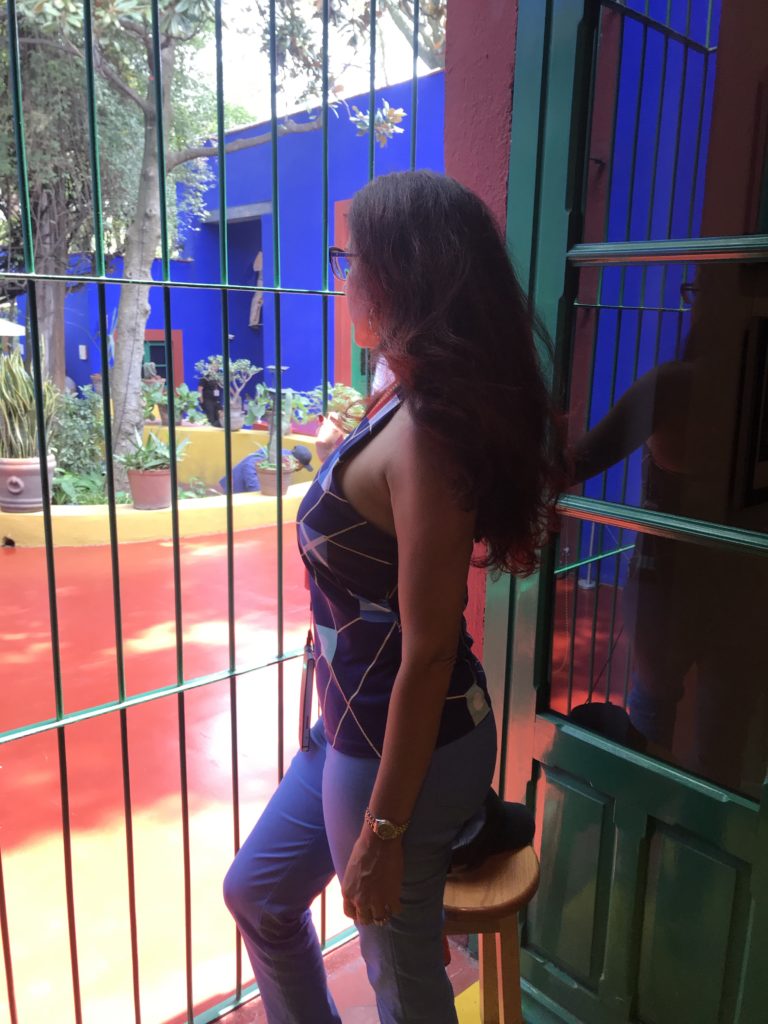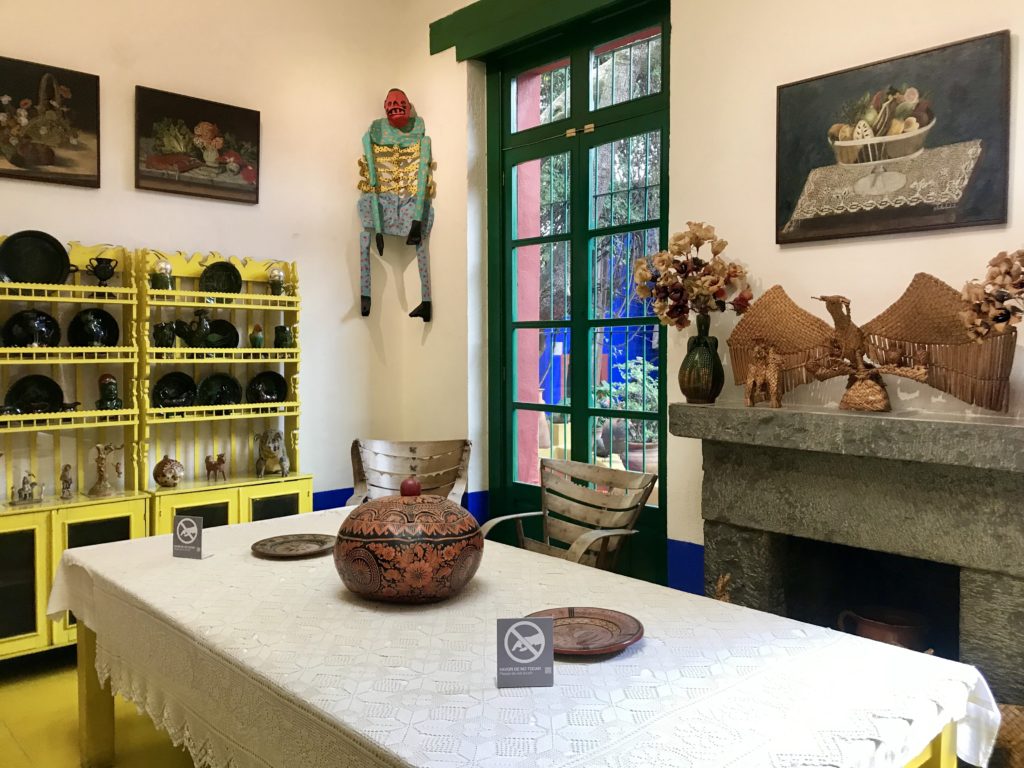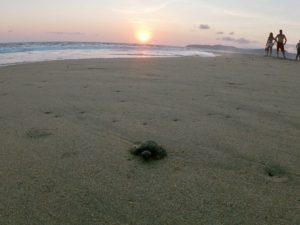My trip to Mexico City in September 2019 was extraordinary. My husband and I did a lot more than we planned. Our hotel accommodations were excellent, the weather was beautiful, and all of our tours unfolded perfectly. We have traveled to Mexico many times exploring Mayan Ruins and other points of cultural interests throughout the Yucatan Peninsula. Mexico City is a must for anyone craving to learn more about Mexico’s cultural and storied past.
-
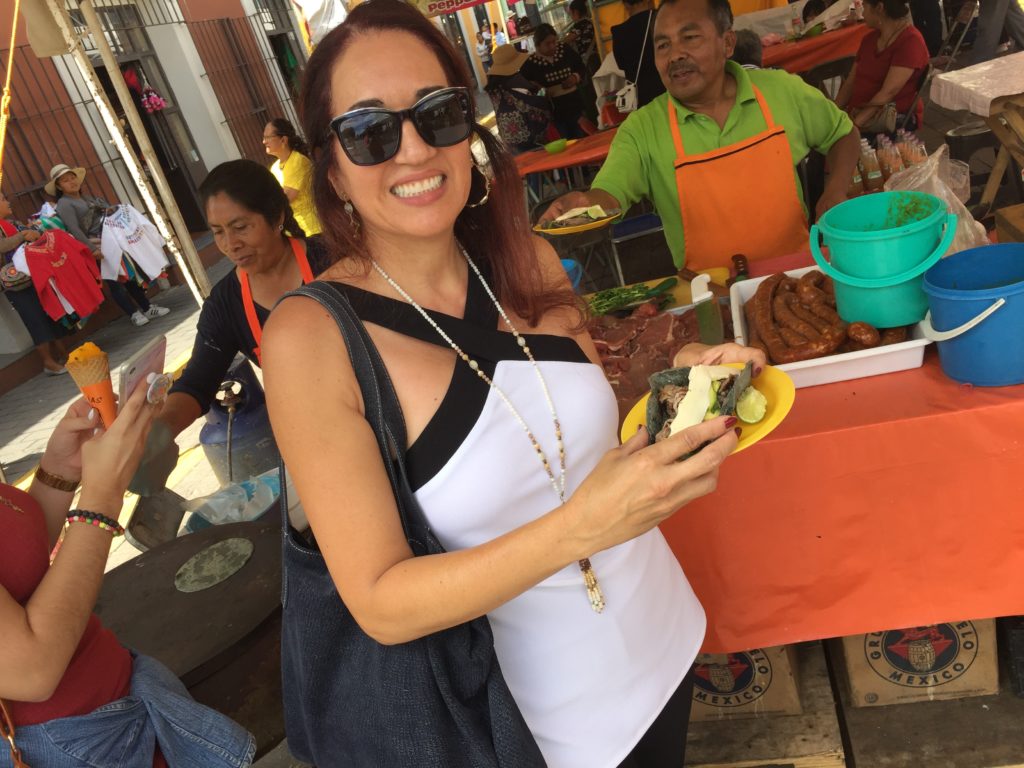
Market Taco in Cholula -
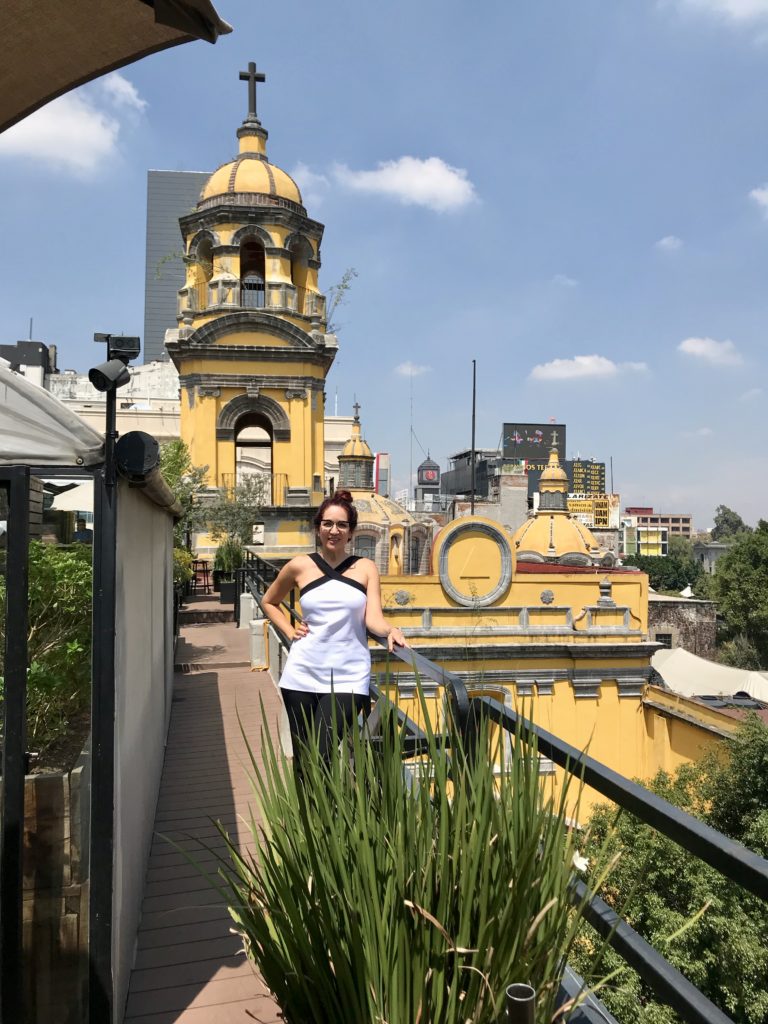
Colorful Basilica in Mexico City
We stayed at the Hilton Mexico City Reforma Hotel. It’s an excellent hotel with wonderful accommodations, professional staff, and outstanding amenities including the best Mexican cuisine we’ve ever enjoyed at the El Cardenal Restaurant. The hotel is ideally located in the upscale and highly popular La Reforma Area which is close to many historical and cultural points of interests. When not on guided tours, we were able to walk to nearby points of interests like the National Palace where The History of Mexico mural by Diego Rivera is displayed, the National Cathedral, Plaza de la Constitución, Museum of Modern Art, Mexico City’s Central Park and Bosque de Chapultepec. We found the walkability of the area around the hotel safe and pleasant especially if you enjoy people watching and amateur street entertainment.
-
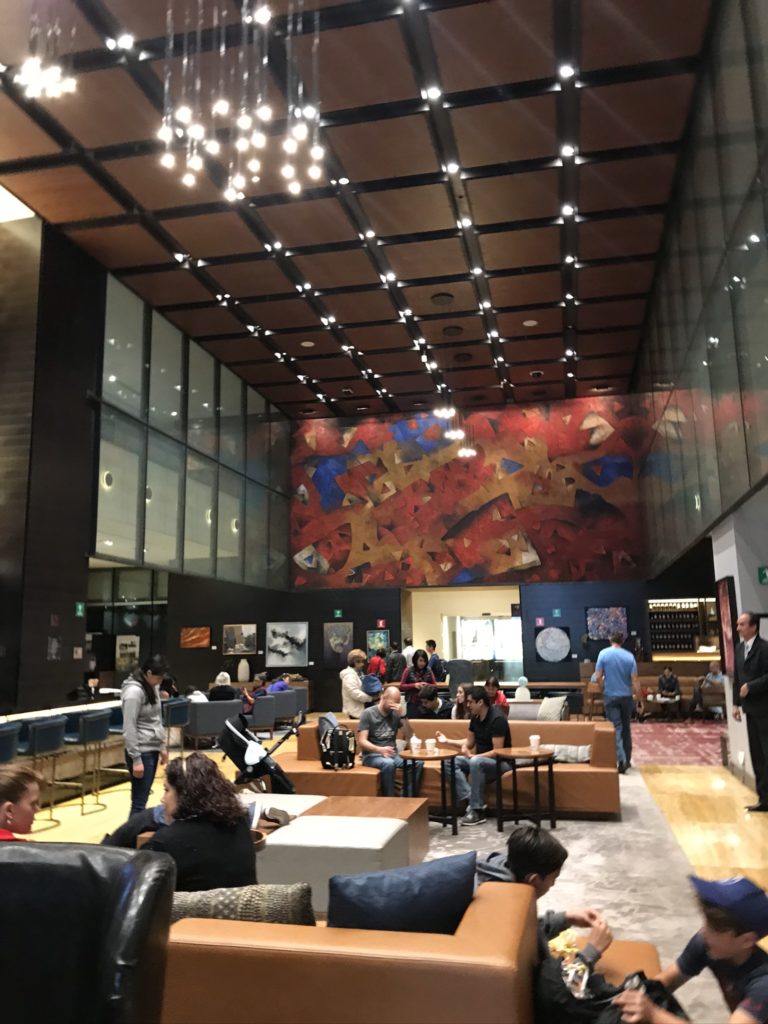
Mexico City Hilton Hotel Lobby -
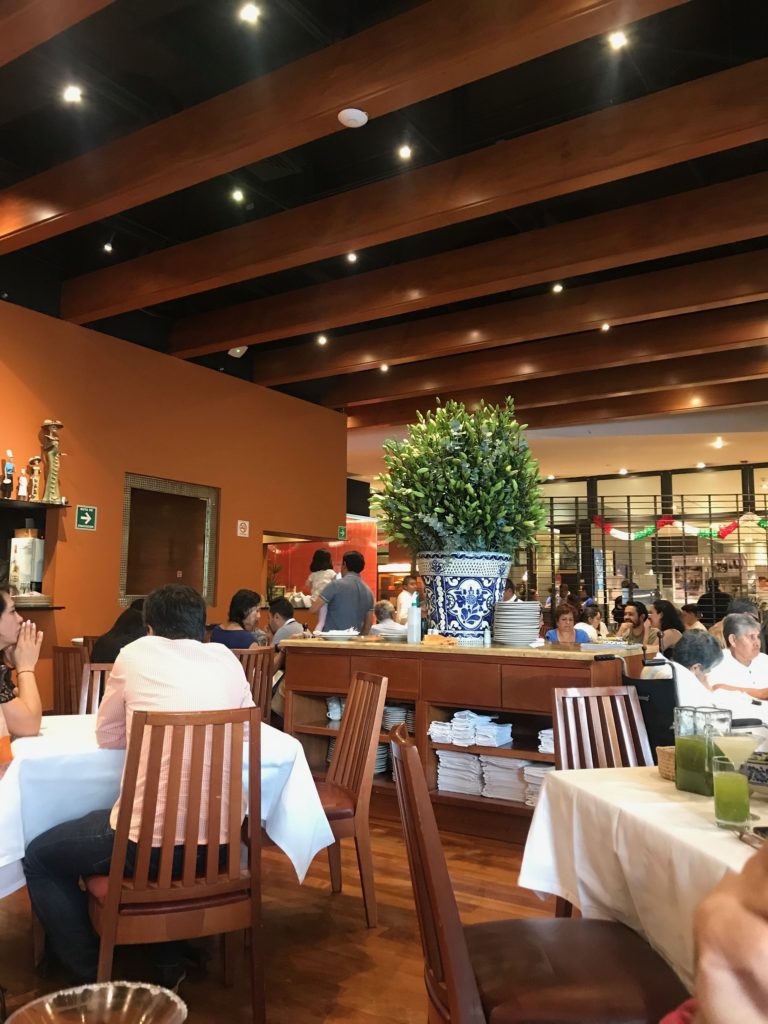
El Cardenal Restaurant -
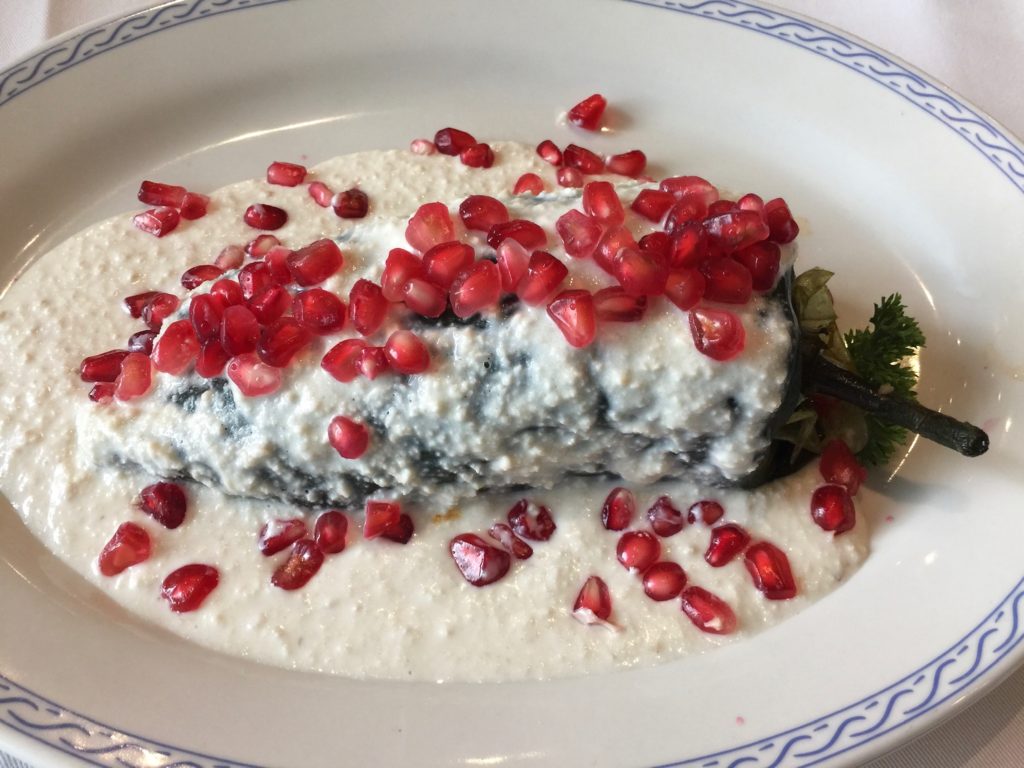
Chiles en Nogada – Popular Independence Day Dish -
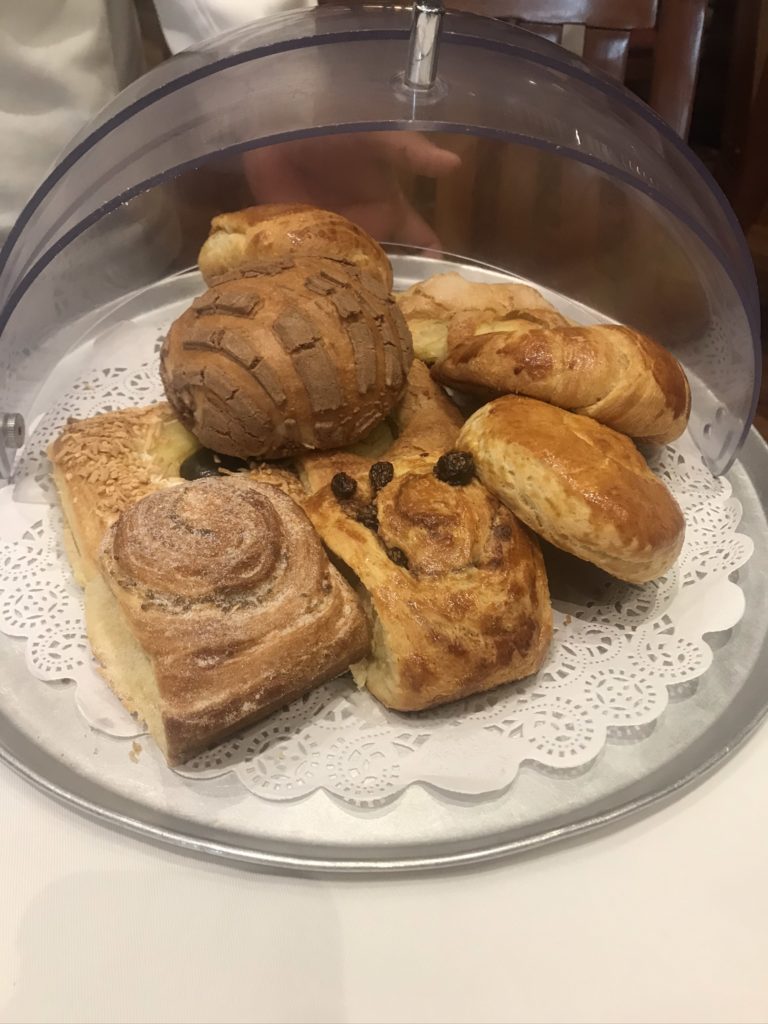
Daily Fresh Pastry at El Cardenal Restaurant -

Molcajete – A Popular Dish at El Cardenal Restaurant -
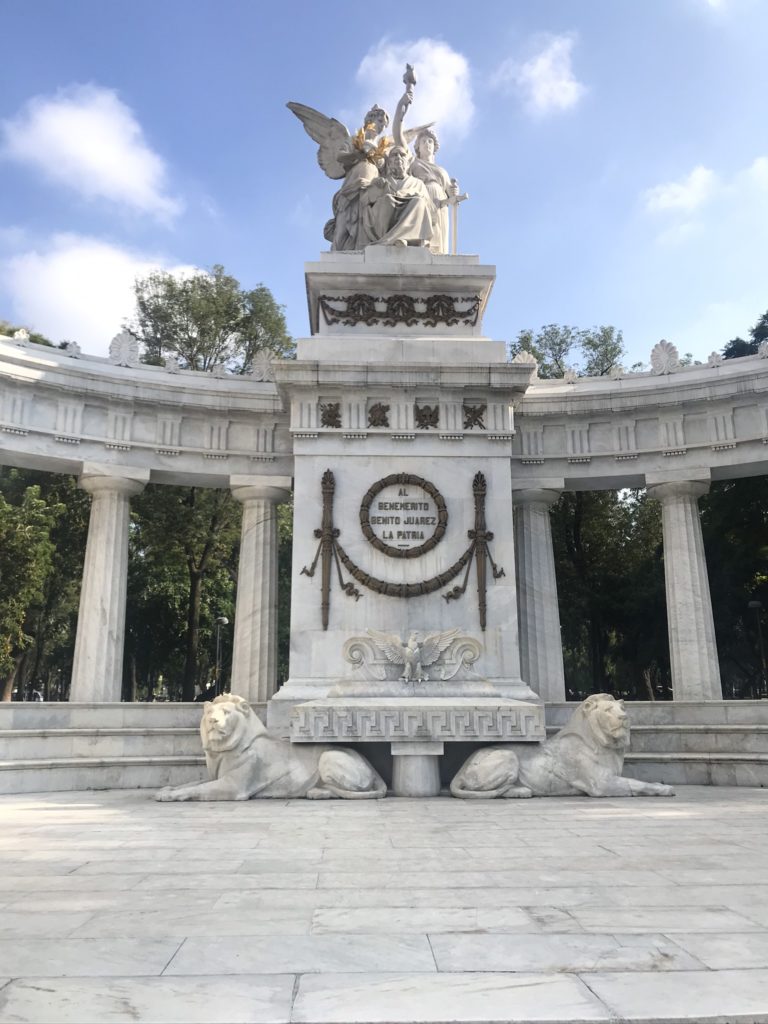
Hemiciclo a Juarez Monument Near Hilton Hotel -
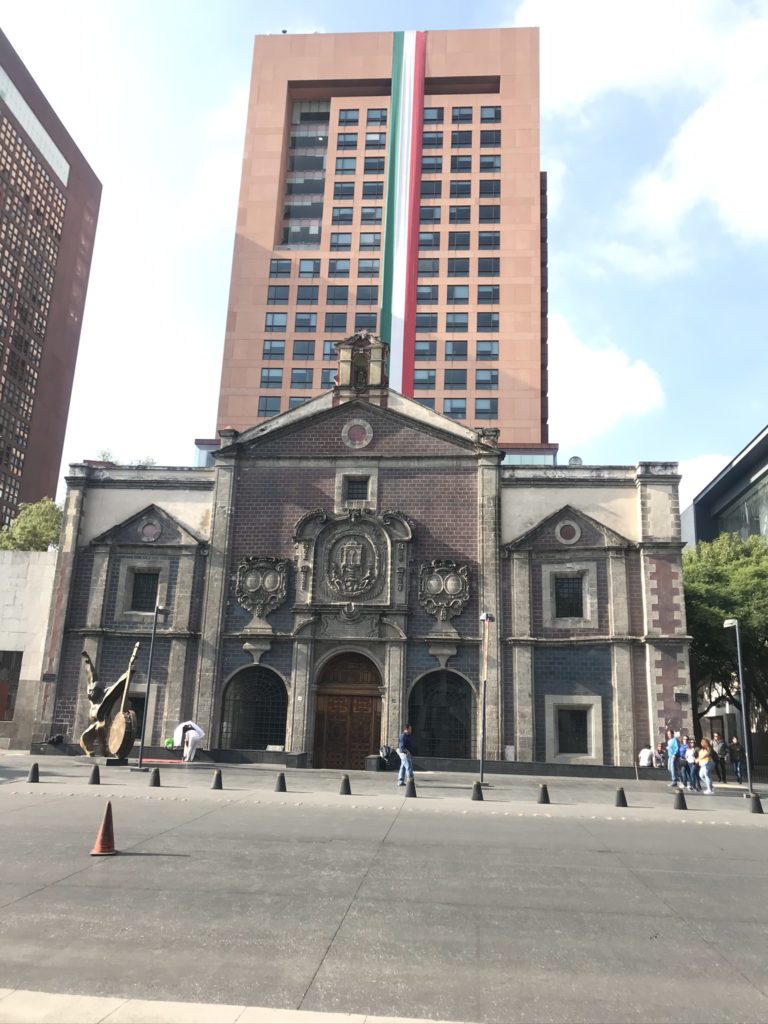
-

-

“History of Mexico” Mural at National Palace
One first tour excursion was a full-day private cultural and historical tour of the Teotihuacan Pyramids and the Shrine of Guadalupe. To see these sites and to stand in the shadows of each made us feel incredibly surreal. What had been a dream of ours to visit these landmarks was now real.
The grandeur and scale of the pyramids and surrounding archeological complex are impressive, especially when standing on top of the Pyramid of the Sun. From this perch, you get an appreciative picture of the layout of this great city, which was built over 2000 years ago. The Aztecs found the city in the 1400s and named it Teotihuacan (meaning “the place where the gods were created”). It was designated a UNESCO World Heritage Site in 1987. There is only one way to ascend to the top of the pyramid. That is, “one step at a time.” The climb to the top can be physically challenging. In our case, divine providence intervened. We met a group of missionary nuns about to make the climb and they welcomed us to join them. We thought “if they can do it, we can too.” Along the way they joked and teased each other like playful children. They made it a lot of fun. When we got to the top of the pyramid, the nuns made a “beeline” for a small metal plate and hole marking the center of the pyramid. There, each of them poked their index finger into the little hole where it is believed some level of energy is transferred to the person who’s touching it. We did it too. We felt nothing, but it was fun to witness all the enthusiasm the small hole generated among all the tourists. Though many mysteries about the complex remain despite years of archeological research and excavations, this visit certainly complimented our desire to learn more about Mexico’s cultural and storied past.
-

Hot Air Ballooning Above Teotihuacan -

Hot Air Balloons Rising Above Teotihuacan at Sunrise -
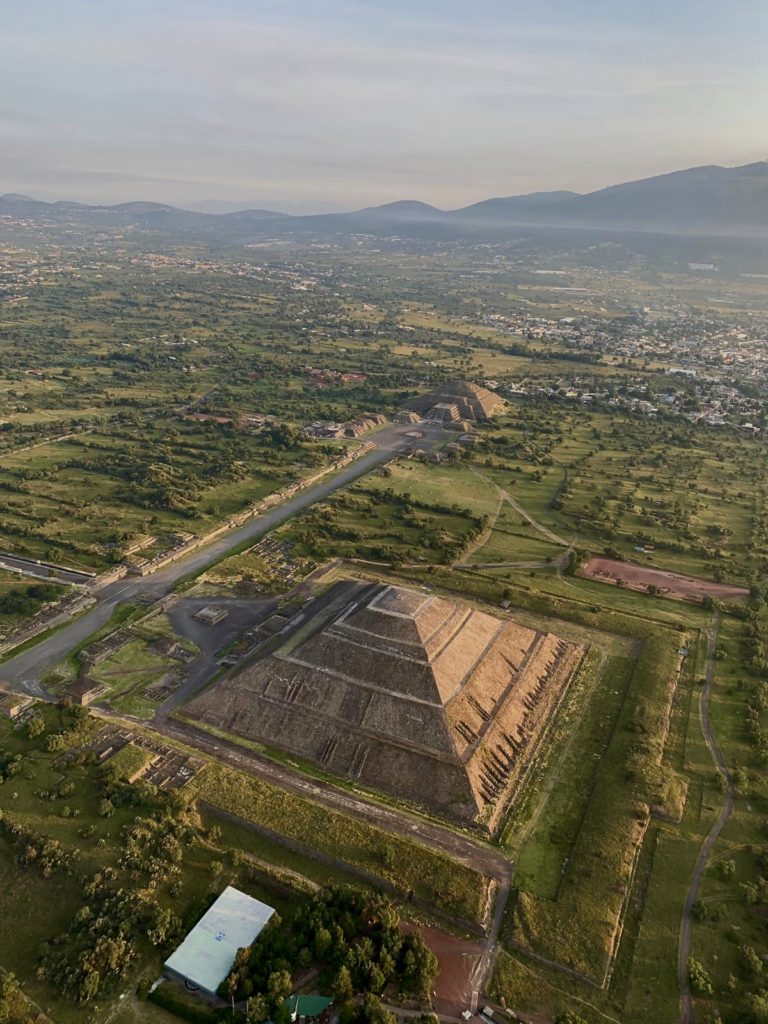
Pyramid of the Sun at Teotihuacan -

Our 1st View of the Pyramid of the Sun -

We’re About to Ascend to the Top of the Pyramid of the Moon -

Visiting Aztec Ruins in Mexico City -

Missionary Nuns at Top of the Pyramid of the Sun -

Shrine of Guadalupe -
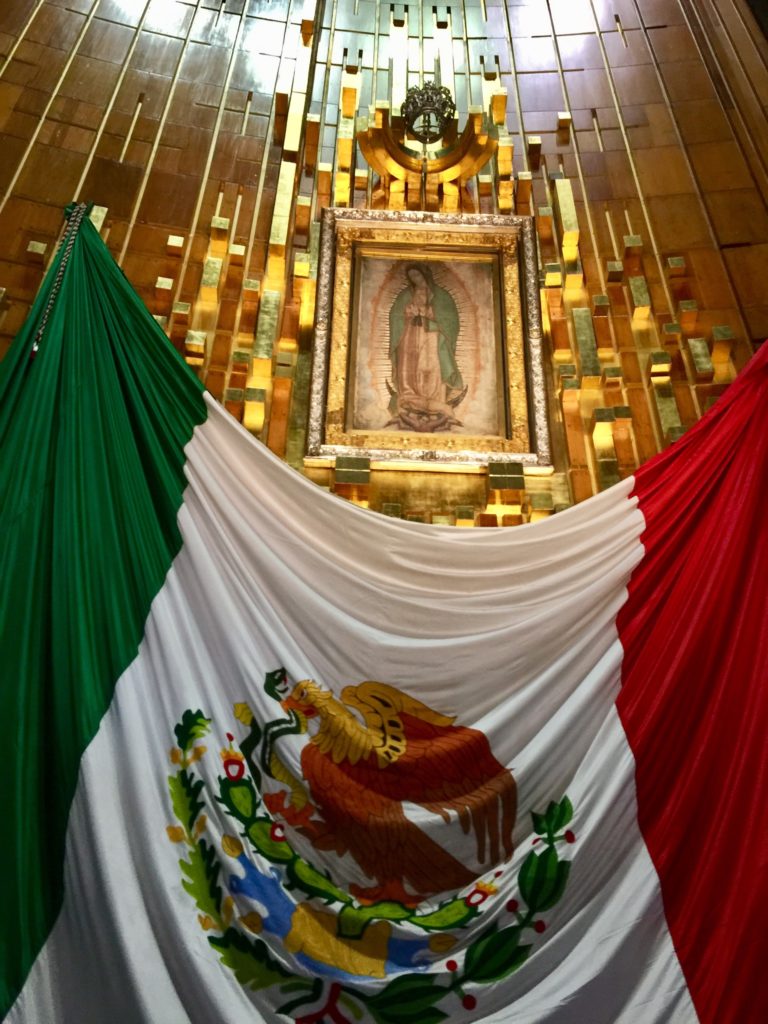
The Image of Mary on Saint Diego’s Tilma
The second stop on our full-day tour was the Shrine of Guadalupe. My husband and I are life-long Catholics and are very familiar with the miracle of “Our Lady of Guadalupe” from our religious teachings. So, it was not surprising we made this destination a top priority. “Our Lady of Guadalupe” is the patron saint of Mexico. The Shrine of Guadalupe in Mexico City honors the legendary 16th-century appearance of the Virgin Mary to Juan Diego, a local peasant. Mary appeared before Juan Diego to ask him to build a church there. He asked Mary for proof of her appearance to show the local bishops, so Mary had him pick flowers and put them in the “tilma” (outer garment) he was wearing. When he went to the bishops, he opened his “tilma” and imprinted on the garment was an image of Mary, appearing exactly as he had described her to the bishops. The original tilma bearing Mary’s image today hangs above the high altar of the Guadalupe Basilica, where it is protected by bulletproof glass and low-oxygen atmosphere. Seeing it is a memory I will never forget.
Our next full-day adventure was another “jam-packed” day. We visited the National Museum of Anthropology in the morning, cruised the canals of Xochimilco over lunch and early afternoon, and toured Casa Azul the home of Frida Kahlo in the late afternoon.
In my opinion, the National Museum of Anthropology may be the “creme de la creme” of things to do in the immediate downtown Mexico City area. It’s the largest and most visited museum in Mexico, and offers a treasure trove of history, culture and knowledge. The museum is vast and has 23 permanent exhibit halls. Each exhibit is expertly detailed and designed to educate the public. It houses the world’s largest collection of ancient Mexican art and other objects detailing the history, habits, and customs of the indigenous peoples of Mexico. If you are interested in a scholarly overview of Mexico’s history and culture, visiting the museum will resonate with you. I’d recommend visitors plan to spend a minimum of a half-day at the museum in order to take it all in. It’s well worth the time.
-

Entrance to the National Museum of Anthropology -
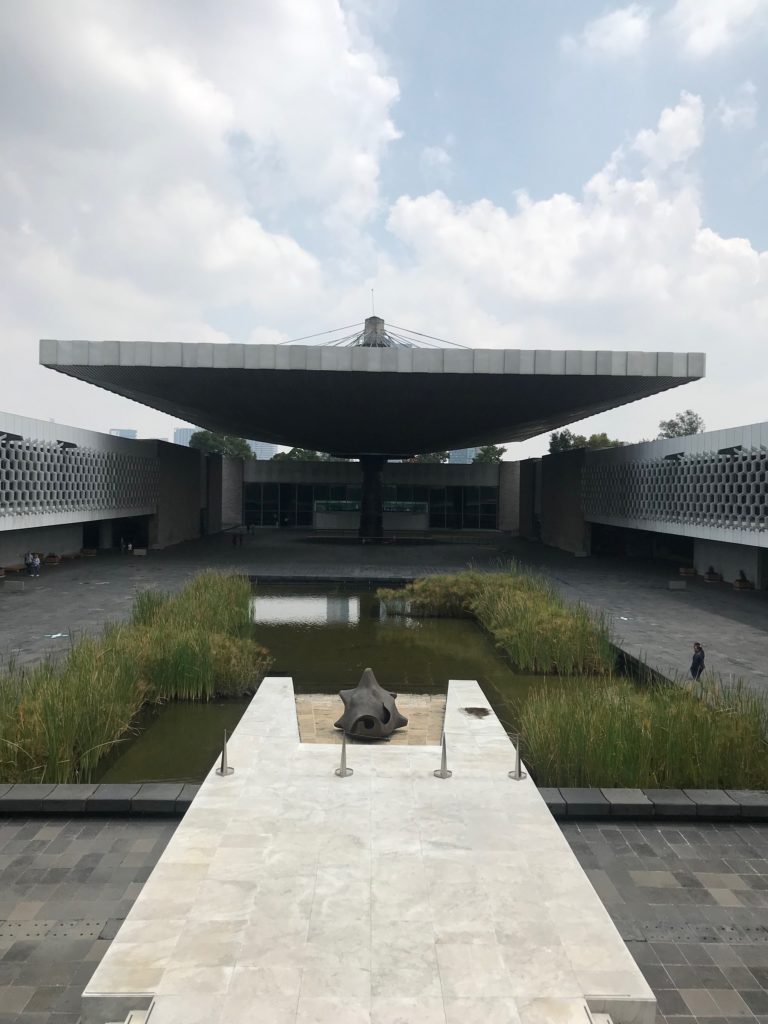
Large Fountain in Courtyard at Museum of Anthropology -
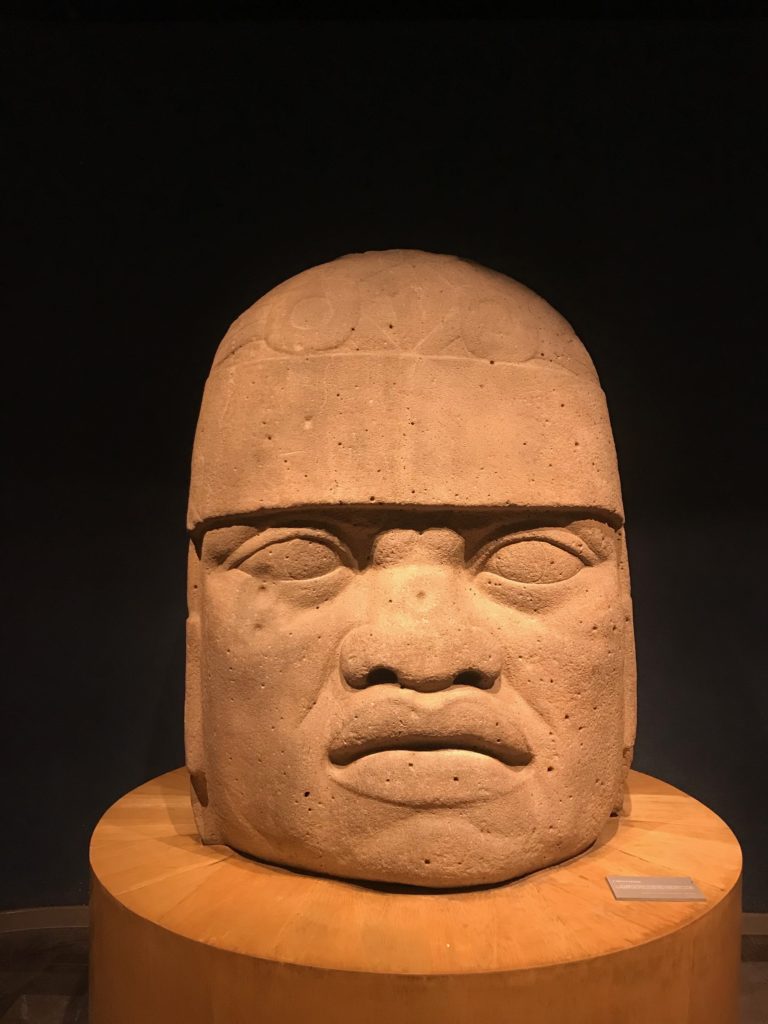
Early Olmeca Civilization -

Aztec Calendar Stone
A water ride on the canals of Xochimilco is an appealing attraction. For us, it was the perfect respite after several days of non-stop touring. We intentionally elected to tour the canals mid-week to avoid the crowds, congestion of trajineras (colorful boats or gondolas) on the canal and raucous merriment. It proved very relaxing, as we meandered along the canals circumnavigating the chinampas (which are the floating gardens recognized as a UNESCO World Heritage Site – though they’re actually stationary). The sounds of birds chirping and placid waters lapping against the boat was only punctuated by an occasional dog barking from a nearby residence. Along the way, we ordered freshly made and delicious traditional Mexican tacos and drinks from a floating taco stand and hired a floating mariachis band to serenade us as we lunched. We thoroughly enjoyed our time on the canals.
-
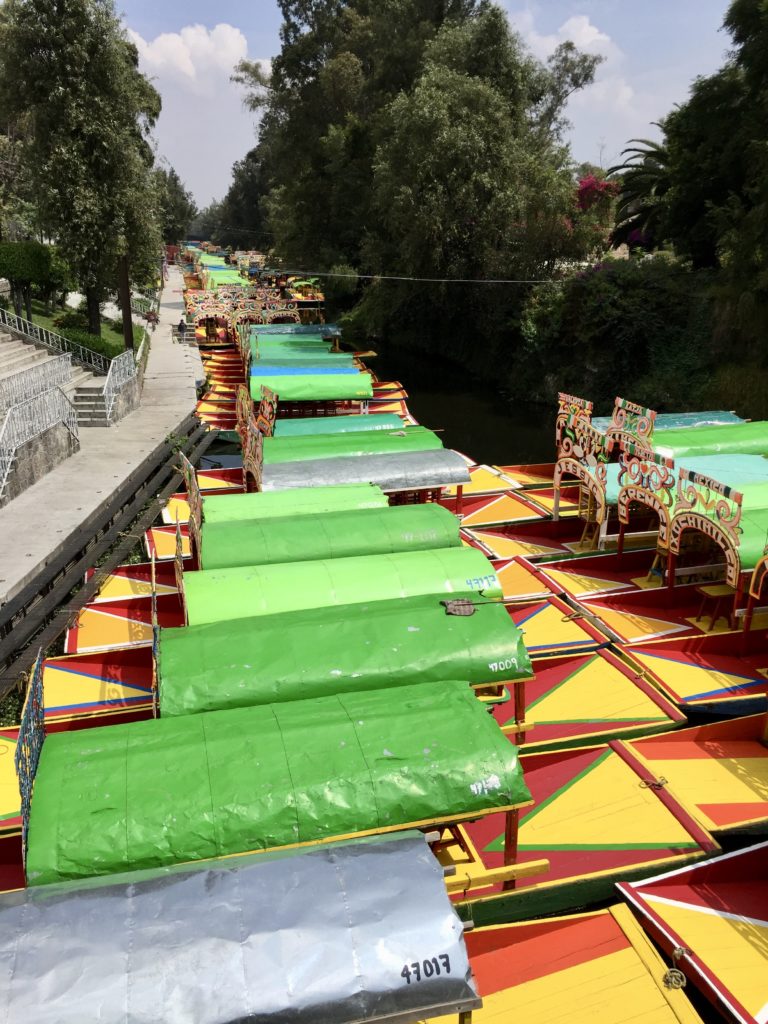
Colorful Boats at Xochimilco -
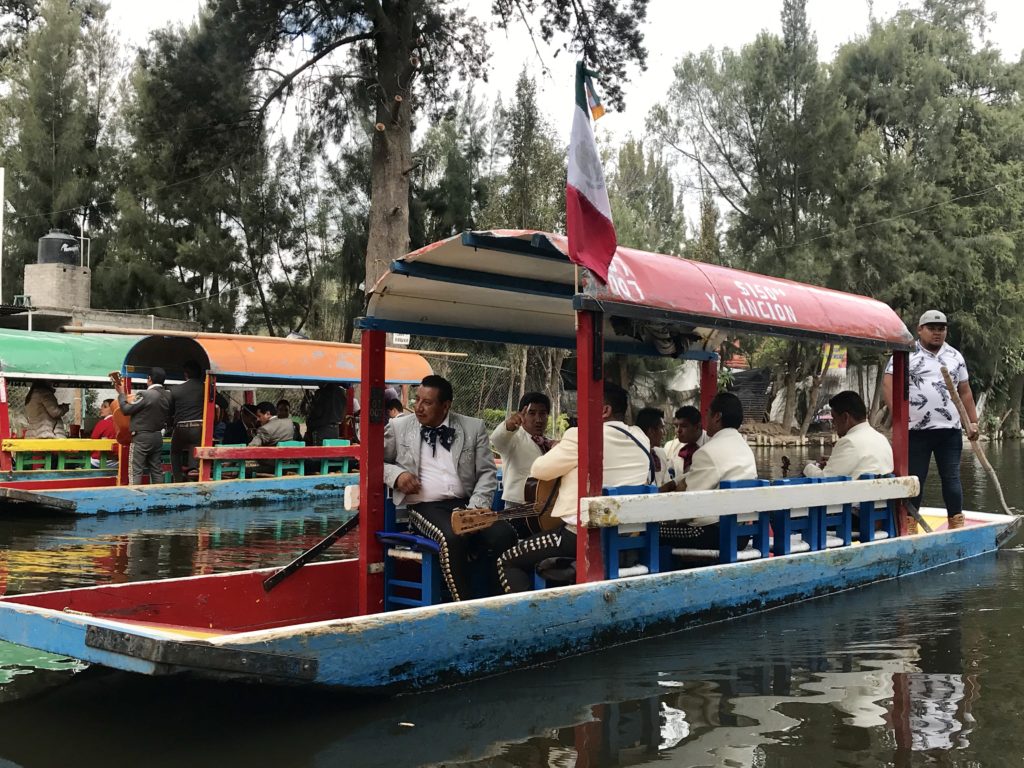
Touring Mariachi Band -
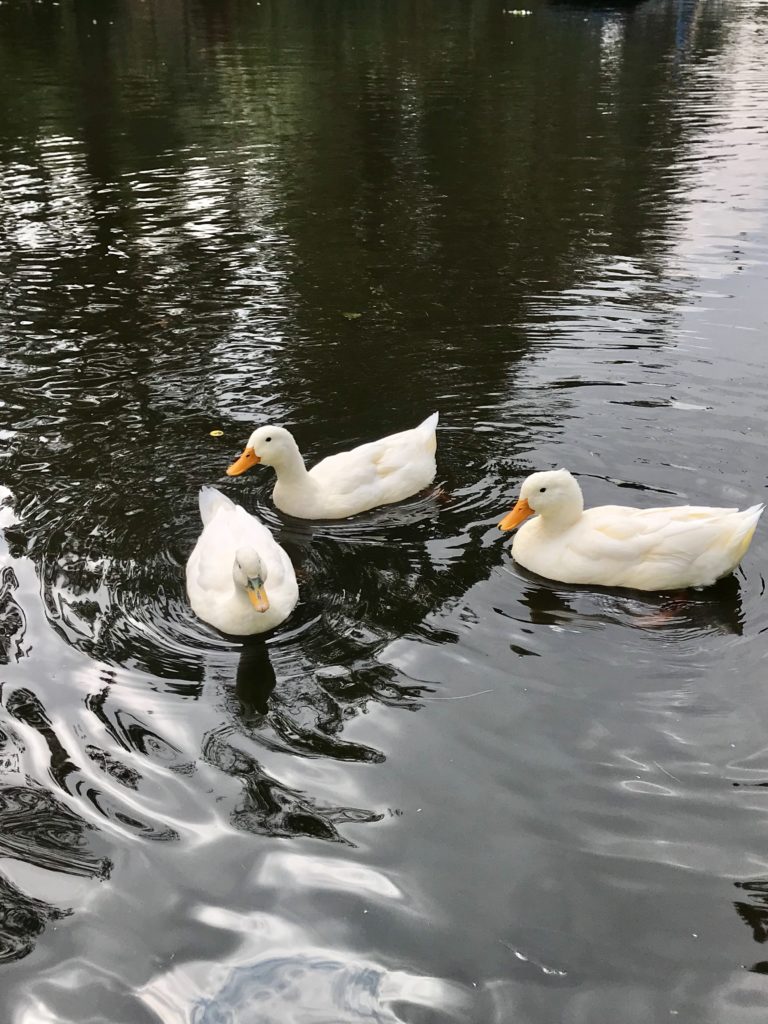
Placid Waters of the Canals of Xochimilco
One of my favorite attractions to visit is Casa Azul, which was the home of Frida Kahlo, a famous painter known for her many self-portraits. It’s now a museum that provides an extraordinary in-depth biographical tribute of her life, her trials and tribulations including serious physical injuries she suffered as a teenager, her art, as well as her marriage to Diego Rivera, their infidelities and interests in socialism. I had wanted to visit the museum since watching the biographical drama film “Frida” several years ago. The museum exudes a surreal personal connection between visitor and her life as you walk from room to room literally arms-length away from many of Frida’s heirlooms, prized possessions and artwork, her studio, garden area, wheelchair, back braces and many other artifacts. Interestingly, pictures of various socialist world leaders of the era are displayed on her bedroom wall. If interested, I’d suggest a couple of considerations. Her life story is intriguing. The more you know the better served you will be. Purchase your tickets in advance and “skip the line privilege” if possible. The museum is a small venue. It fills up with visitors quickly. Finally, rent the audio head set to ensure you capture the textual content of important exhibits.
On another day we visited the cities of Cholula and Puebla located outside of Mexico City. It too was a wonderful tour. We had so much fun with the other tourists in the group, three of whom were from Puerto Rico. Cholula is a quaint old colonial town. It is best known for its Great Pyramid, the beautiful Shrine of Our Lady of Remedies, ornate churches, and bustling market. The pyramid is the largest pyramid on earth. It is even larger than the Egyptian Pyramids. Though covered with vegetation, there is an archeological tunnel that visitors can access with limited views of its interior. Puebla is another beautifully picturesque city. It is the birthplace of Cinco de Mayo (the 5th of May) that celebrates the Mexican army’s victory over France at the Battle of Puebla on May 5, 1862. The downtown historical center with its beautiful French and Spanish architecture is a UNESCO World Heritage Site. If the weather is clear, you can even see Popocatépetl, an active volcano near Puebla. The view is amazing.
I also recommend visiting the National Palace where The History of Mexico mural by Diego Rivera resides, the National Cathedral, Plaza de la Constitución, Museum of Modern Art, Mexico City’s Central Park and Bosque de Chapultepec. Each attraction merits dedicated time to appreciate. Of particular note are the colorful murals by Diego Rivera that adorn the main stairwell and the walls on the second floor. He one of Mexico’s most treasured artists and was married to Frida Kahlo. The murals trace the “The History of Mexico” from 1521 to 1930. The murals are masterpieces rich with details. Interestingly, Rivera, who was a member of the Communist party, is known for his creative control and attacking the ruling class, the church and capitalism in his murals. In the largest mural he conveys powerful social and political messages. In one scene is Karl Marx who appears to be espousing socialism, arousing working class people, and railing against capitalism, and Frida seated next to an open copy of the Communist Manifesto. If you love art, a visit to the palace to see the murals is a must.
-

Church of San Francisco Acatepec in Cholula -
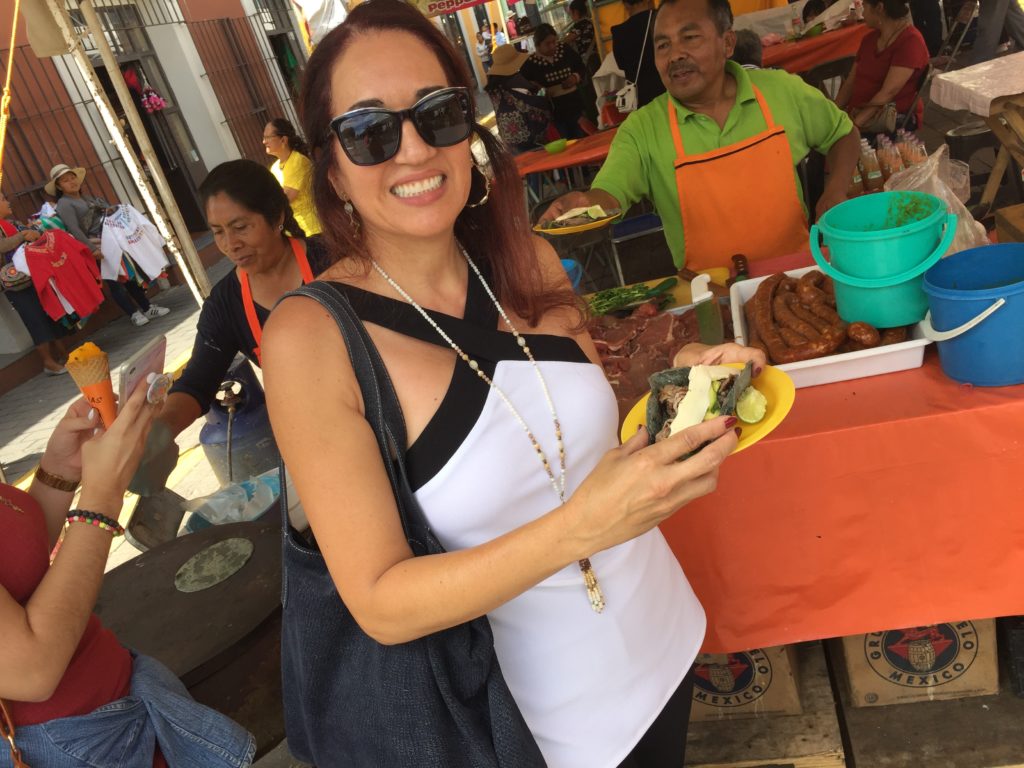
Enjoying a Taco at Food Market in Cholula -
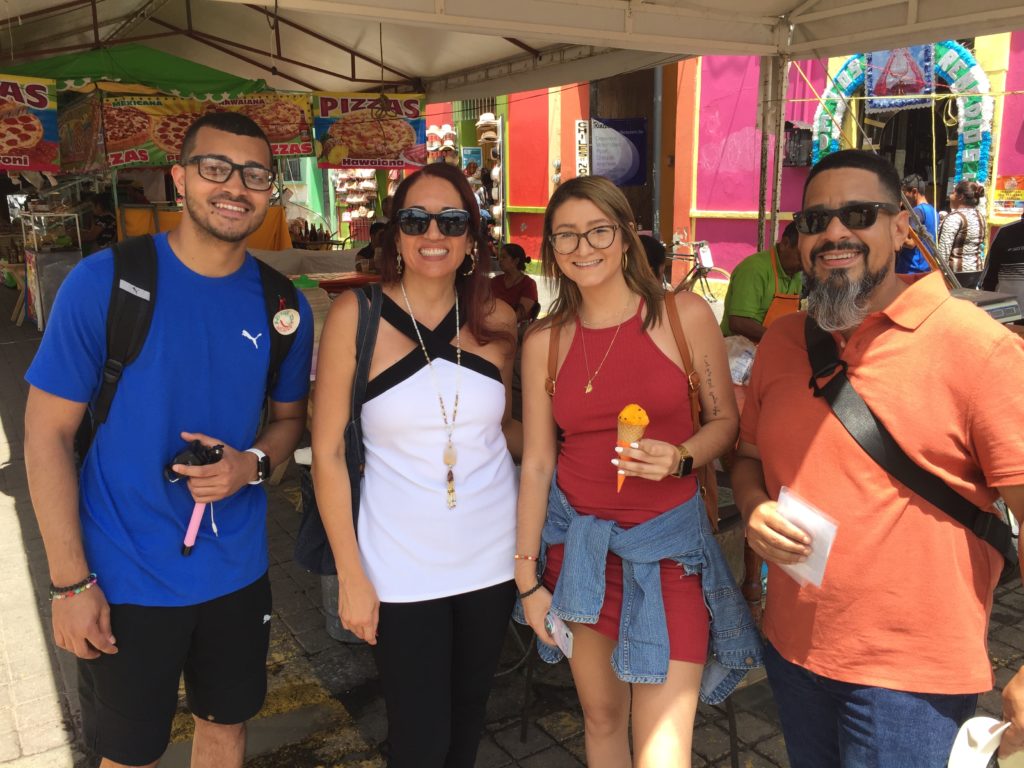
Other Visitors from Puerto Rico Touring Cholula and Puebla
